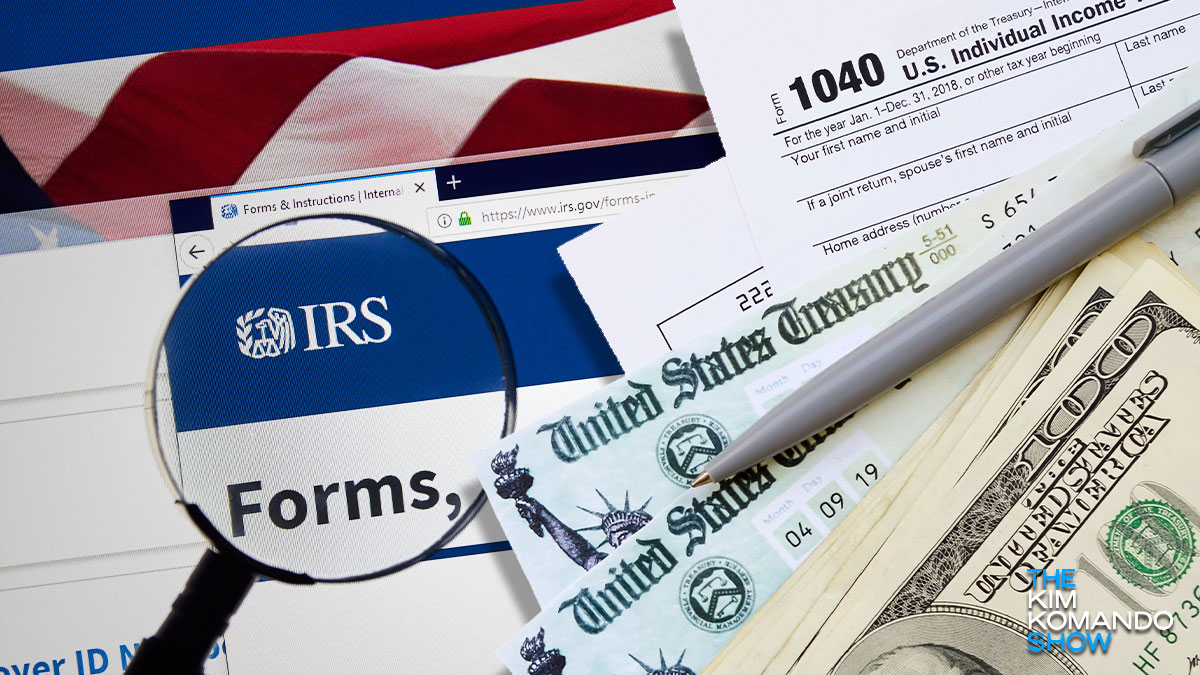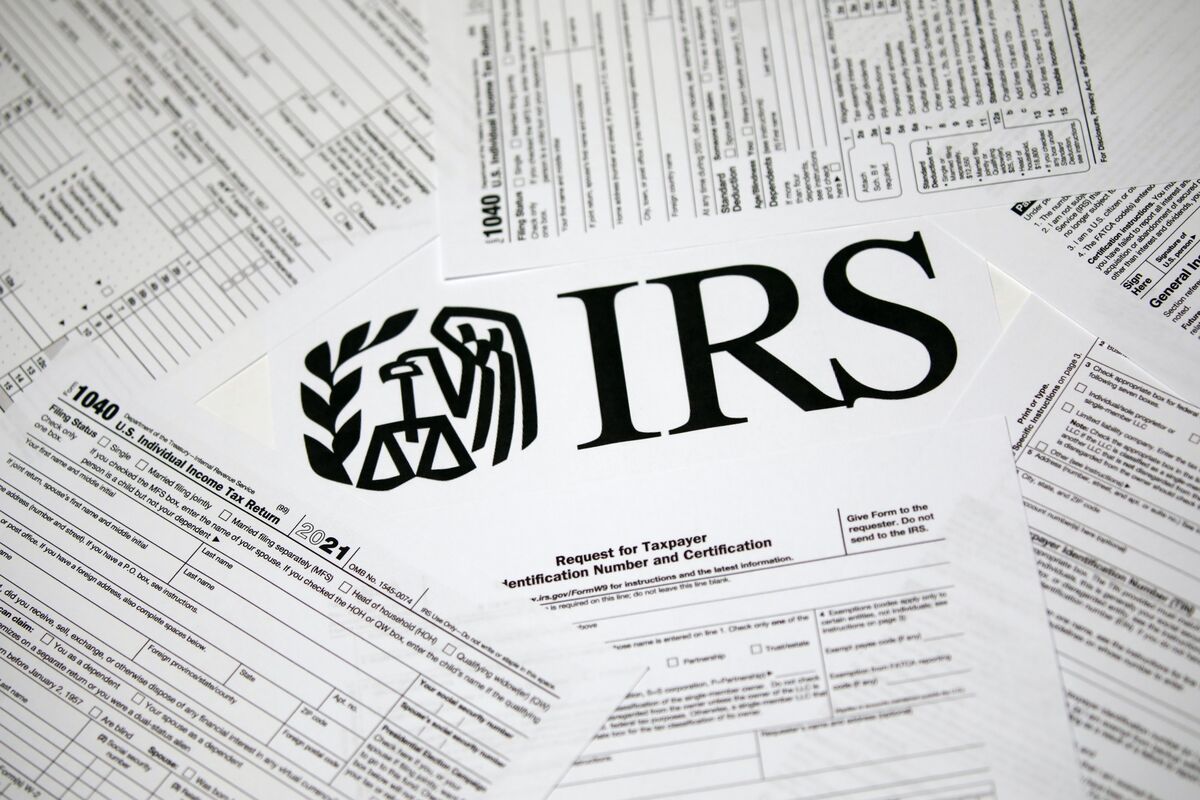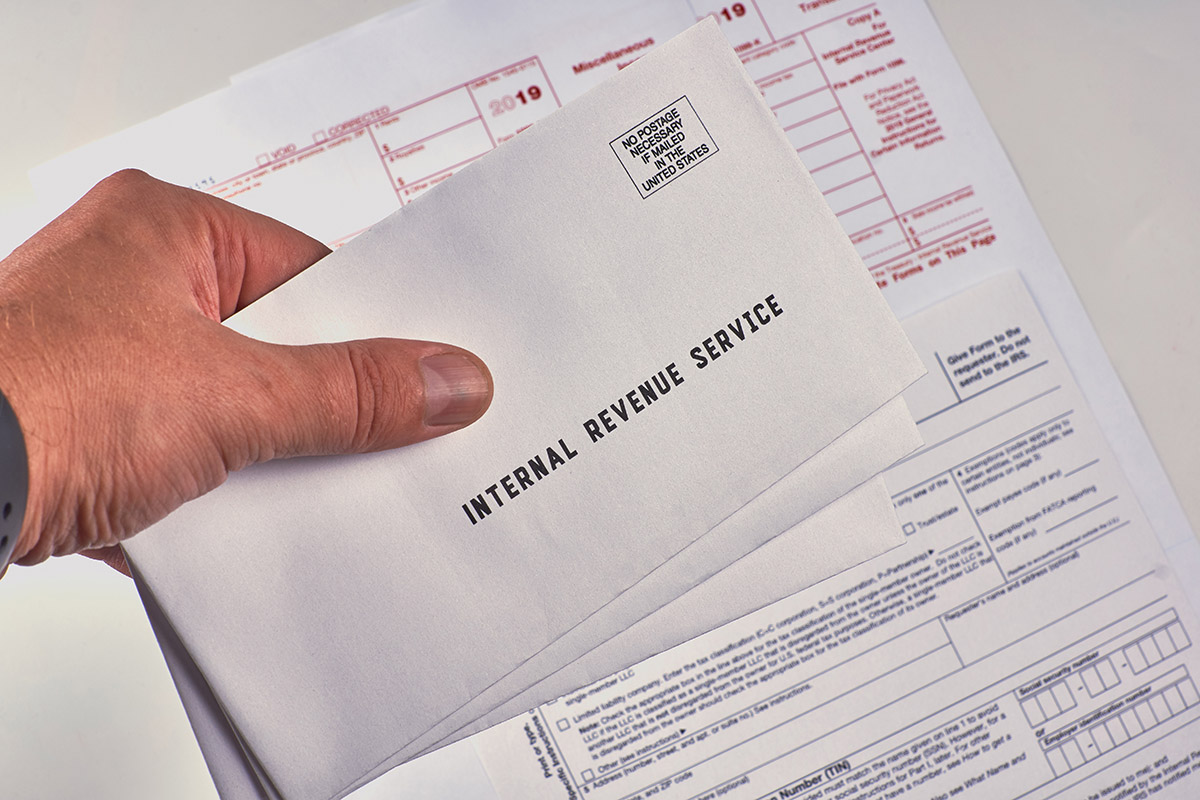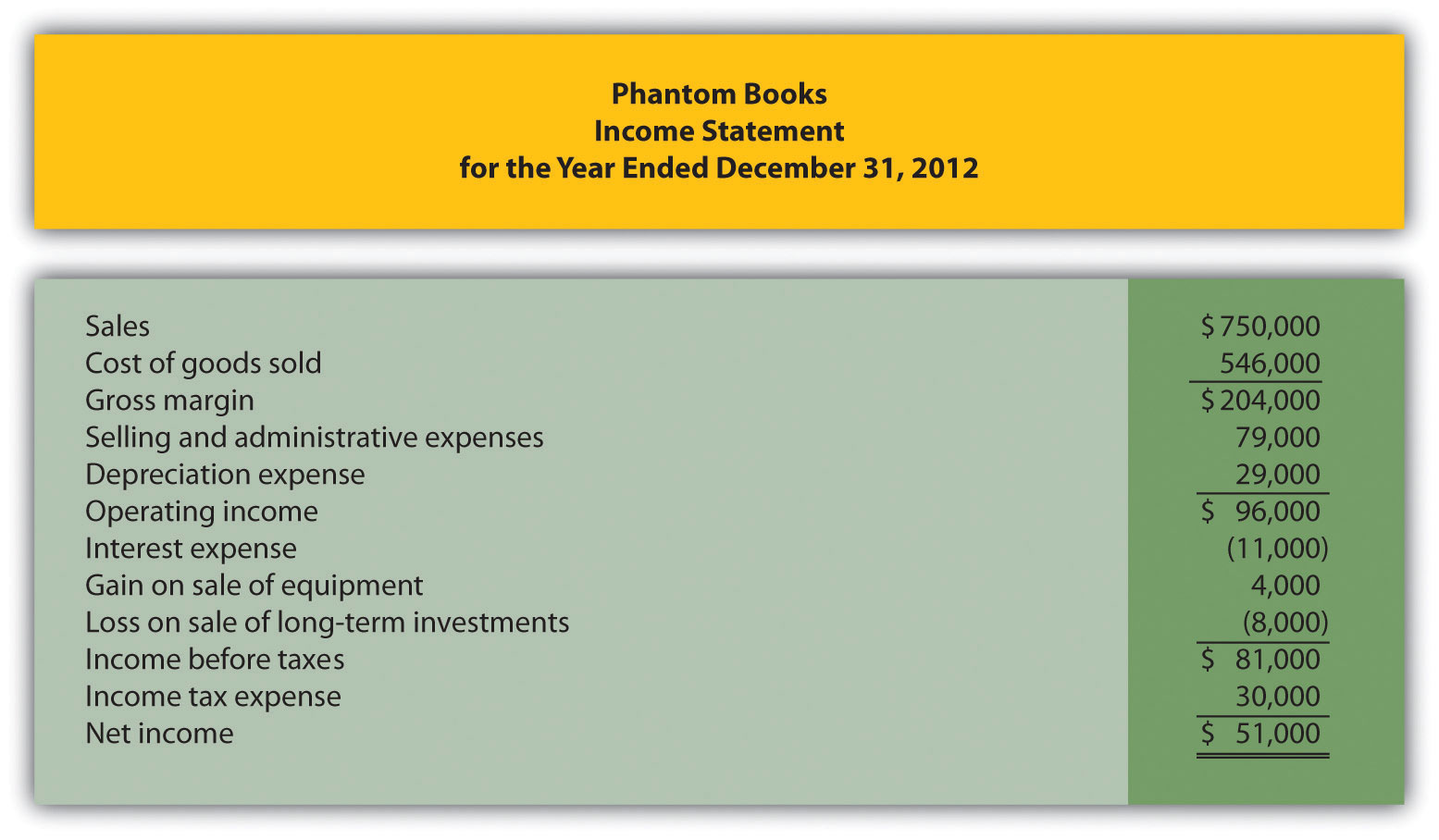

Finance
Where Is Loss Carry Forward On Tax Return?
Published: October 28, 2023
Looking for information on where to find the loss carry forward section on your tax return? Check out this helpful guide for all your finance-related queries.
(Many of the links in this article redirect to a specific reviewed product. Your purchase of these products through affiliate links helps to generate commission for LiveWell, at no extra cost. Learn more)
Table of Contents
- Introduction
- Understanding Loss Carry Forward
- Importance of Loss Carry Forward
- Eligibility for Loss Carry Forward
- Reporting Loss Carry Forward on Tax Return
- Where to Find Loss Carry Forward on Tax Return
- How to Use Loss Carry Forward on Tax Return
- Tips and Considerations for Reporting Loss Carry Forward
- Conclusion
Introduction
When it comes to filing taxes, maximizing deductions and minimizing taxable income is a top priority for individuals and businesses alike. One valuable tool that can help in this regard is the concept of loss carry forward. Loss carry forward is a provision in the tax code that allows taxpayers to offset current or future taxable income with losses incurred in previous years.
Loss carry forward can be a game-changer for those who have experienced financial setbacks or business losses in the past. It allows individuals and businesses to use those losses to reduce their tax liability and potentially receive a refund for taxes paid in previous years. However, understanding the ins and outs of loss carry forward and knowing where to report it on your tax return can be a bit of a challenge.
In this article, we will delve into the details of loss carry forward and provide guidance on how to accurately report it on your tax return. Whether you are an individual taxpayer looking to offset personal losses or a business owner trying to maximize deductions, this information will prove invaluable in ensuring you are taking full advantage of loss carry forward.
Understanding Loss Carry Forward
Loss carry forward is a mechanism that allows taxpayers to utilize losses incurred in previous years to offset taxable income in the current or future years. In simpler terms, if you have experienced financial losses in the past, you can use those losses to reduce your tax liability in subsequent years.
There are various types of losses that can be carried forward, including business losses, capital losses, and net operating losses (NOLs). Business losses refer to losses incurred by a business entity, while capital losses arise from the sale of assets such as stocks, real estate, or investments. Net operating losses occur when a taxpayer’s allowable deductions exceed their taxable income.
The primary purpose of loss carry forward is to provide relief to taxpayers who have experienced temporary setbacks by allowing them to recover some of their previous tax payments. Without this provision, taxpayers would be unable to fully recoup losses and would bear the burden of those losses indefinitely.
It’s important to note that loss carry forward is subject to certain limitations. The tax code sets restrictions on the amount of losses that can be carried forward and the number of years for which losses can be carried forward. These limitations vary depending on the type of loss and the tax jurisdiction.
By understanding the concept of loss carry forward, you can leverage it to your advantage when preparing your tax returns. It provides a valuable opportunity to reduce your tax liability and potentially receive a refund for taxes paid in previous years.
Importance of Loss Carry Forward
The importance of loss carry forward cannot be overstated, as it offers significant benefits to taxpayers who have experienced losses in previous years. Here are some key reasons why loss carry forward is crucial:
- Tax Savings: Loss carry forward allows individuals and businesses to offset their taxable income with losses, resulting in lower tax liability. By reducing the amount of taxable income, taxpayers can enjoy substantial tax savings, which can have a significant impact on their finances.
- Recovery of Losses: Loss carry forward provides an avenue for taxpayers to recoup some of their previous losses. Financial setbacks can be debilitating, and loss carry forward offers a way to gradually recover and offset these losses over time. This can provide much-needed financial relief and help individuals and businesses get back on their feet.
- Business Continuity: For businesses, loss carry forward is particularly important as it helps to ensure their continuity and long-term viability. By utilizing past losses to offset future profits, businesses can reduce their tax burden and free up funds for reinvestment, expansion, or other operational needs. This can be critical for businesses facing temporary downturns or unexpected obstacles.
- Encouragement of Risk-Taking: Loss carry forward encourages entrepreneurship and innovation by mitigating the risks associated with starting a new venture. Knowing that losses can be carried forward and utilized in subsequent years provides a safety net for entrepreneurs, giving them the confidence to take risks and invest in new business opportunities.
- Fairness in Taxation: Loss carry forward ensures fairness in the tax system by allowing taxpayers to offset their losses against their income. Without this provision, losses incurred in one year would be a permanent burden for taxpayers, creating an imbalance in the tax treatment of gains and losses.
Overall, loss carry forward plays a vital role in the tax system by providing relief, encouraging business growth, and promoting economic stability. It is a valuable tool that can make a significant difference in the financial well-being of individuals and businesses alike.
Eligibility for Loss Carry Forward
While loss carry forward offers significant benefits, it is important to understand the eligibility criteria and limitations that govern its use. Here are some key factors that determine eligibility for loss carry forward:
- Types of Losses: Loss carry forward applies to different types of losses, such as business losses, capital losses, and net operating losses (NOLs). These losses must be incurred in the proper tax year and meet specific criteria set forth by the tax code.
- Source of Loss: The losses that are eligible for carry forward must originate from legitimate business activities or investment activities. Losses incurred from personal expenses or illegal activities are generally not eligible for loss carry forward.
- Taxpayer Status: Both individuals and businesses can potentially qualify for loss carry forward. Individual taxpayers can carry forward losses related to business activities, investment losses, or other deductible expenses. Meanwhile, businesses can carry forward losses incurred in their operations.
- Limitations and Restrictions: The tax code imposes limitations on the amount and duration of loss carry forward. These limitations may vary based on the type of loss and the tax jurisdiction. For example, there may be restrictions on the amount of losses that can be carried forward in a given year, or there may be a maximum number of years for which losses can be carried forward.
- Reporting and Documentation: To be eligible for loss carry forward, taxpayers must accurately report their losses on their tax returns and maintain supporting documentation. This documentation may include financial statements, income statements, and documentation of eligible expenses.
It is important to consult with a qualified tax professional or review the specific tax laws in your jurisdiction to determine your eligibility for loss carry forward. They can provide guidance based on your individual or business circumstances and help ensure that you meet all the requirements for utilizing loss carry forward.
By understanding the eligibility criteria and limitations associated with loss carry forward, you can effectively plan your tax strategy and take advantage of this valuable provision to minimize your tax liability and maximize your financial benefits.
Reporting Loss Carry Forward on Tax Return
Reporting loss carry forward on your tax return is a crucial step in ensuring that you take full advantage of this valuable tax provision. Here are the key considerations and steps involved in reporting loss carry forward:
- Identify the Type of Loss: Determine the specific type of loss that you are carrying forward, such as business losses, capital losses, or net operating losses (NOLs). Each type of loss may have different reporting requirements, so it is important to understand the specific rules applicable to your situation.
- Choose the Correct Tax Form: Depending on your taxpayer status and the type of losses you are carrying forward, you will need to select the appropriate tax form for reporting. For individuals, Form 1040 or Form 1040 Schedule D may be relevant for capital losses, while Form 1040 Schedule C or Form 1040 Schedule F may be used for business losses. Businesses may need to use Form 1120 or other applicable corporate tax forms.
- Report Loss Carry Forward Amount: On the relevant tax form, locate the section where you report your losses or deductions. Depending on the form, this may be Schedule D for capital losses, Schedule C for business losses, or other applicable sections. Enter the amount of the loss that you are carrying forward from a previous year(s) and follow the instructions provided.
- Provide Supporting Documentation: In most cases, you will need to provide supporting documentation for the loss carry forward claim. This can include financial statements, income statements, and records of eligible expenses. Keep these documents on hand in case the tax authorities request them for verification purposes.
- Check for Specific Instructions: Review the instructions provided with the tax form to ensure that you are correctly reporting the loss carry forward. Different forms may have specific guidelines or additional schedules that need to be completed. Following these instructions will help ensure accuracy and compliance.
It is important to emphasize that the process of reporting loss carry forward may vary depending on your specific circumstances, the type of losses involved, and the tax jurisdiction you are in. Therefore, it is always advisable to consult with a qualified tax professional or refer to the specific tax laws relevant to your situation for accurate guidance and compliance.
By accurately reporting loss carry forward on your tax return, you can maximize the benefits of this provision and potentially reduce your tax liability, leading to significant savings and financial advantages.
Where to Find Loss Carry Forward on Tax Return
When filing your tax return, it’s important to know where to find the section that deals with loss carry forward. The specific location may vary depending on the tax form you are using and the type of losses you are carrying forward. Here are some common places to look for loss carry forward on your tax return:
- Individual Tax Return: If you are an individual taxpayer, you will typically find the section related to loss carry forward on IRS Form 1040 or its variants. Look for the appropriate schedule or section that relates to the type of loss you are carrying forward.
- Capital Losses: If you are carrying forward capital losses from the sale of stocks, real estate, or other assets, you may need to fill out Schedule D on Form 1040. This is where you report and calculate your capital gains and losses for the year.
- Business Losses: If you are reporting business losses, you may need to fill out Schedule C or Schedule F, depending on the nature of your business. Schedule C is for sole proprietors, while Schedule F is for farmers or agricultural businesses. These forms allow you to report your business income and deductions, including loss carry forward.
- Net Operating Losses (NOLs): Net operating losses are losses where your allowable deductions exceed your taxable income. To carry forward NOLs, you may need to complete Form 1045 or Form 1040X. These forms allow you to claim a refund for the NOLs carried forward to offset taxable income in previous years.
- Other Forms: Depending on your specific tax situation, there may be other forms or schedules where you need to report loss carry forward. For example, if you have partnership losses, you may need to use Form 1065. If you have corporate losses, you may need to use Form 1120.
It is important to carefully review the instructions provided with the relevant tax form and schedules to ensure that you accurately report loss carry forward. If you are unsure about where to find this information on your tax return, it is advisable to seek assistance from a tax professional for guidance.
Remember, accurately reporting loss carry forward ensures that you are taking full advantage of this provision and optimizing your tax benefits.
How to Use Loss Carry Forward on Tax Return
Utilizing loss carry forward on your tax return involves a few key steps to ensure that you are maximizing the benefits of this provision. Here is a guide on how to effectively use loss carry forward on your tax return:
- Identify Eligible Losses: Determine the type of losses that are eligible for carry forward, such as business losses, capital losses, or net operating losses (NOLs). Keep in mind that there may be specific rules and limitations for each type of loss.
- Calculate Carry Forward Amount: Calculate the amount of loss that can be carried forward to offset taxable income in the current or future years. This will depend on the specific tax laws and limitations applicable to your situation.
- Report Carry Forward Amount: On the appropriate section of your tax return, report the carry forward amount of losses. This may involve completing specific forms or schedules, such as Schedule D for capital losses or Schedule C for business losses.
- Apply Carry Forward Amount: When calculating your taxable income for the current year, apply the carry forward amount to offset any income. This will help reduce your tax liability and potentially result in a lower tax bill or even a refund if the carry forward amount exceeds your taxable income.
- Keep Accurate Records: It is crucial to maintain accurate records of your losses and the corresponding carry forward amounts. This documentation includes financial statements, income statements, and any supporting documents related to the losses claimed.
- Follow Tax Laws and Regulations: Ensure that you are complying with all applicable tax laws and regulations when using loss carry forward. Stay updated on any changes to the tax code that could impact the eligibility and utilization of loss carry forward.
Remember, utilizing loss carry forward requires careful attention to detail and accurate reporting. If you have specific questions or concerns about how to use loss carry forward on your tax return, it is advisable to consult with a tax professional who can provide personalized guidance based on your individual or business situation.
By effectively using loss carry forward on your tax return, you can minimize your tax liability and maximize your financial benefits, ultimately improving your overall tax position.
Tips and Considerations for Reporting Loss Carry Forward
Reporting loss carry forward on your tax return involves careful attention to detail and adherence to applicable tax laws. To ensure accuracy and maximize your tax benefits, consider the following tips and considerations:
- Keep Detailed Records: Maintain accurate and organized records of your losses and carry forward amounts. This includes financial statements, income statements, and any supporting documentation. These records will provide evidence and support in the event of an audit or review by the tax authorities.
- Consult a Tax Professional: If you are uncertain about how to report loss carry forward or if you have complex tax circumstances, seek guidance from a qualified tax professional. They can provide personalized advice based on your specific situation and ensure compliance with tax laws.
- Stay Informed About Tax Laws: Tax laws and regulations can change, which can impact the eligibility and utilization of loss carry forward. Stay updated on any amendments to the tax code and consult with a tax professional to understand how these changes may affect your tax return.
- Review the Instructions: Carefully read the instructions provided with the relevant tax forms and schedules. The instructions will guide you on where to report loss carry forward and any specific requirements or calculations that need to be followed.
- Seek Clarification on Limitations: Be aware of the limitations and restrictions on loss carry forward. Different types of losses may have varying carry forward periods or limitations on the amount that can be carried forward. Understanding these limitations can help you plan your tax strategy effectively.
- Double-Check Your Math: Mistakes in calculations can lead to errors in reporting loss carry forward. Double-check your calculations to ensure accuracy and cross-reference your figures with the documentation you have on hand.
- File an Amended Return if Necessary: If you failed to report loss carry forward in a previous year and realize the omission, it may be necessary to file an amended return to correct the error. Consult with a tax professional to understand the process and requirements for amending your tax return.
- Be Prepared for Audits: Loss carry forward claims can attract the attention of tax authorities. Be prepared to substantiate your losses and carry forward amounts with proper documentation in case of an audit or review.
Remember, accurate reporting and compliance with tax laws are essential when it comes to utilizing loss carry forward on your tax return. Following these tips and consulting with a tax professional will help ensure that you maximize your tax benefits while staying in good standing with the tax authorities.
Conclusion
Loss carry forward is a valuable tool in the world of taxation that allows individuals and businesses to offset losses incurred in previous years against current or future taxable income. By leveraging loss carry forward, taxpayers can reduce their tax liability, recoup previous losses, and potentially receive refunds for taxes paid in previous years.
In this article, we explored the importance of loss carry forward and its eligibility criteria. We also discussed how to identify and report loss carry forward on your tax return, as well as provided tips and considerations for accurate reporting.
Remember, accurately reporting loss carry forward requires attention to detail and compliance with tax laws. It is crucial to understand the specific rules and limitations that apply to your situation, as well as to keep accurate records of your losses and carry forward amounts. Consulting with a tax professional can provide personalized guidance and ensure that you are maximizing your tax benefits while remaining in compliance with the tax code.
Utilizing loss carry forward can provide significant tax savings, assist in recovering losses, and promote business continuity. By strategically utilizing this provision, individuals and businesses can navigate financial challenges, encourage risk-taking, and promote fairness in the tax system.
In conclusion, loss carry forward is a powerful tool that can help individuals and businesses minimize their tax liability and generate financial relief. By understanding the process of reporting loss carry forward and following the necessary steps, you can optimize your tax benefits and enhance your overall financial position.














